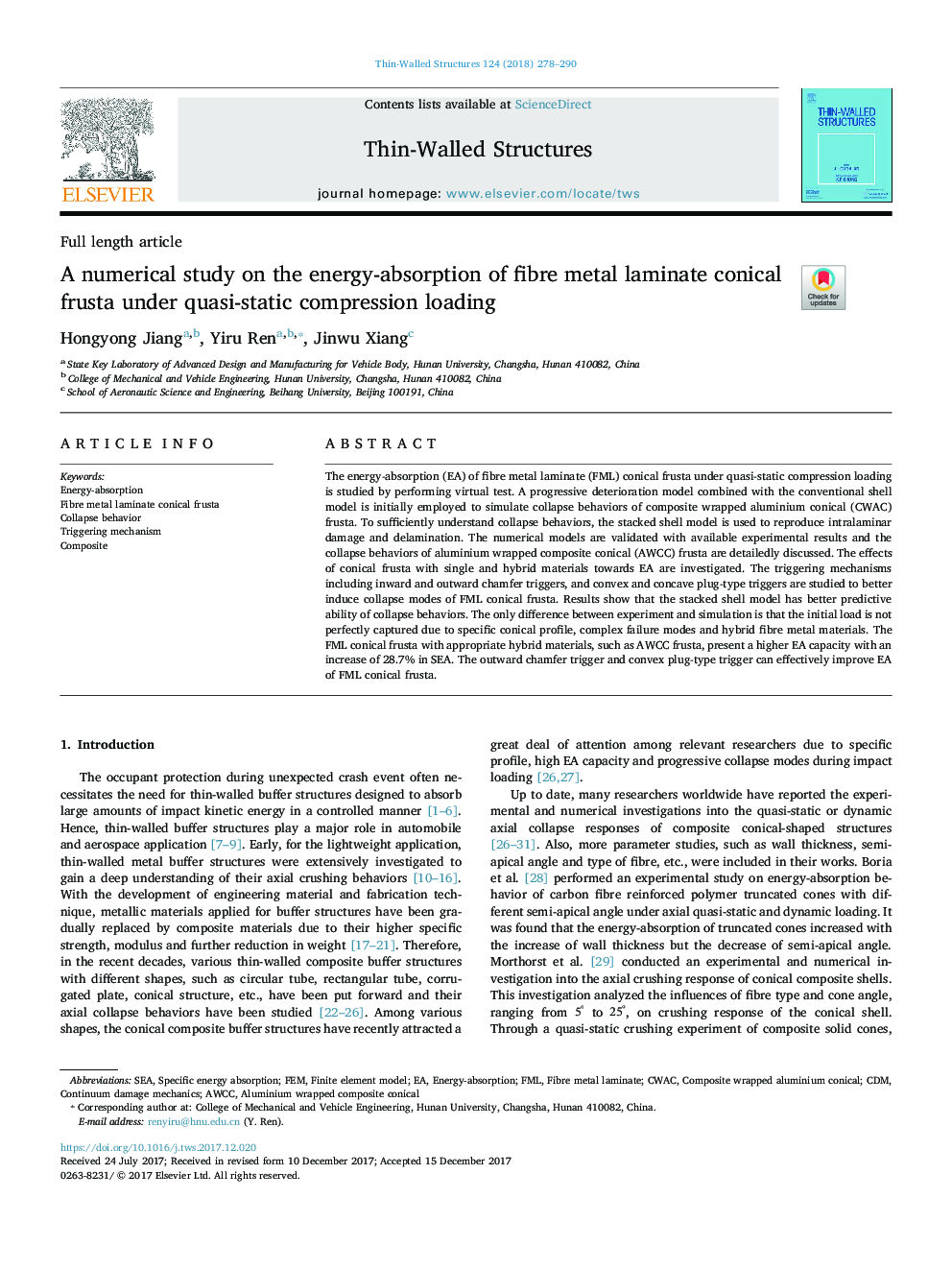| Article ID | Journal | Published Year | Pages | File Type |
|---|---|---|---|---|
| 6778216 | Thin-Walled Structures | 2018 | 13 Pages |
Abstract
The energy-absorption (EA) of fibre metal laminate (FML) conical frusta under quasi-static compression loading is studied by performing virtual test. A progressive deterioration model combined with the conventional shell model is initially employed to simulate collapse behaviors of composite wrapped aluminium conical (CWAC) frusta. To sufficiently understand collapse behaviors, the stacked shell model is used to reproduce intralaminar damage and delamination. The numerical models are validated with available experimental results and the collapse behaviors of aluminium wrapped composite conical (AWCC) frusta are detailedly discussed. The effects of conical frusta with single and hybrid materials towards EA are investigated. The triggering mechanisms including inward and outward chamfer triggers, and convex and concave plug-type triggers are studied to better induce collapse modes of FML conical frusta. Results show that the stacked shell model has better predictive ability of collapse behaviors. The only difference between experiment and simulation is that the initial load is not perfectly captured due to specific conical profile, complex failure modes and hybrid fibre metal materials. The FML conical frusta with appropriate hybrid materials, such as AWCC frusta, present a higher EA capacity with an increase of 28.7% in SEA. The outward chamfer trigger and convex plug-type trigger can effectively improve EA of FML conical frusta.
Keywords
Related Topics
Physical Sciences and Engineering
Engineering
Civil and Structural Engineering
Authors
Hongyong Jiang, Yiru Ren, Jinwu Xiang,
